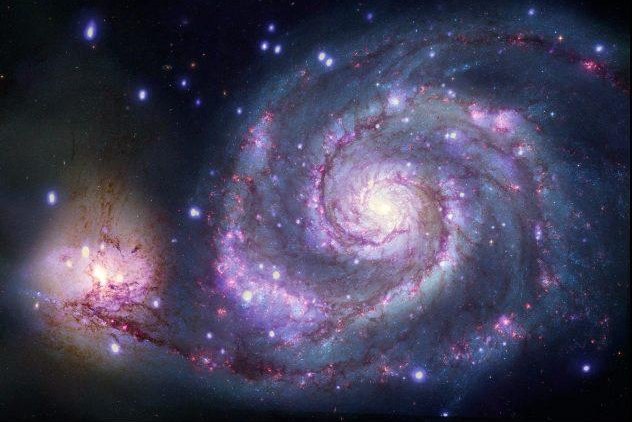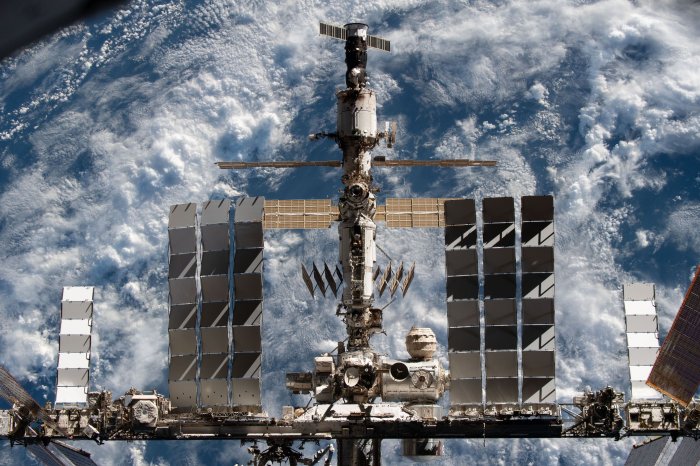The possible new exoplanet was discovered in Messier 51, also known as the Whirlpool Galaxy, about 28 million light-years from Earth. Image courtesy of NASA/CXC/SAO/R. DiStefano/ESA/STScI/Grendler
Scientists may have located a new planet -- one that's not only outside of our solar system, but also our galaxy.
The exoplanet candidate is located in Messier 51, also known as the Whirpool Galaxy, and was detected by the Chandra X-ray Observatory, NASA announced.
If the celestial body is confirmed as an exoplanet, it would be the first one to be discovered outside the Milky Way.
All other exoplanets found have been located less than 3,000 light-years from Earth. The new discovery is 28 million light-years away.
To find the exoplanet candidate, scientists used a new method of searching that relied on looking for the celestial bodies at X-ray wavelengths.
"We are trying to open up a whole new area for finding other worlds by searching for planet candidates at X-ray wavelengths, a strategy that makes it possible to discover them in other galaxies," said Rosanne Di Stefano of the Center for Astrophysics, who led the study published in Nature Astronomy on Oct. 25.
The process lies in identifying an object's transit, or its passage of a planet in front of a star, which blocks some of the star's light and produces a "characteristic dip," the NASA statement explained.
While looking for dips in optical light has helped find thousands of planets, Di Stefano and colleagues instead looked for dips in the brightness of X-rays received from binary systems bright with X-rays, or systems with two stars that usually contain a neutron star or black hole pulling in gas from the companion star, according to NASA.
Materials near the neutron star or black hole become superheated and glow in X-rays in a confined area, so when a planet passes in front of it, the planet could block most or all of the X-rays.
This method could allow scientists to locate exoplanets at greater distances than current optical light transit studies, NASA said.
![]()
NASA's Spitzer Space Telescope shows the Whirlpool Galaxy, where scientists say they have found a possible new exoplanet. The potentially historic discovery, however, cannot be confirmed for about 70 years. Image courtesy NASA
Within the binary system M51-ULS-1, located in M51, a neutron star or a black hole orbits a companion star believed to have a mass about 20 times that of the sun. It was in this system where an X-ray transit lasted about three hours, decreasing the X-ray emissions to zero.
This and other information led researchers to estimate the exoplanet candidate to be roughly the size of Saturn, orbiting the neutron star or black hole about twice the distance of Saturn from the sun.
However, it's expected to take at least 70 years to confirm if the exoplanet candidate is actually a planet because scientists must wait to see if it completes an orbit.
"Unfortunately, to confirm that we're seeing a planet we would likely have to wait decades to see another transit," said co-author Nia Imara of the University of California at Santa Cruz. "And because of the uncertainties about how long it takes to orbit, we wouldn't know exactly when to look."
Researchers consider it unlikely that the dimming was caused by a cloud of gas and dust passing in front of the X-ray source, as the data is more consistent with the model of a planet candidate.
"We know we are making an exciting and bold claim so we expect that other astronomers will look at it very carefully," said co-author Julia Berndtsson of Princeton University in New Jersey.
"We think we have a strong argument, and this process is how science works."
The International Space Station is pictured from the SpaceX Crew Dragon Endeavour during a flyaround of the orbiting lab that took place following its undocking from the Harmony module’s space-facing port on November 8. Photo courtesy of NASA

















